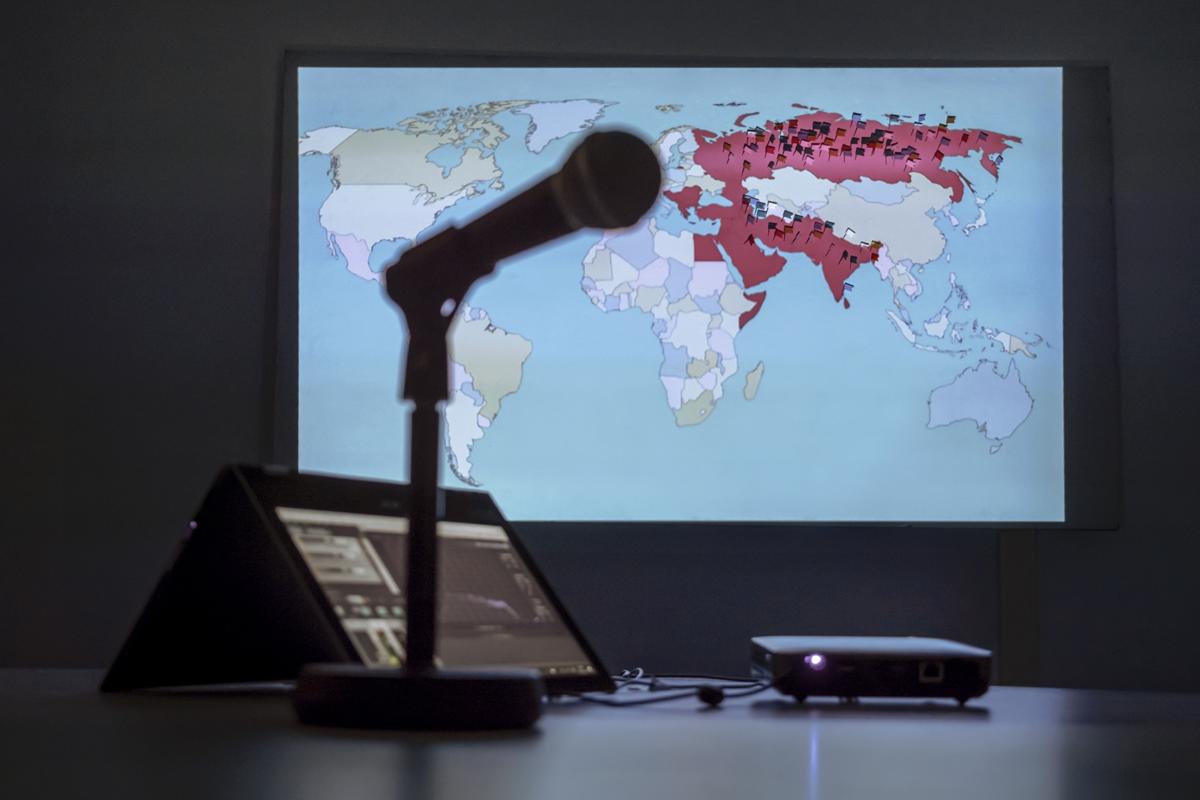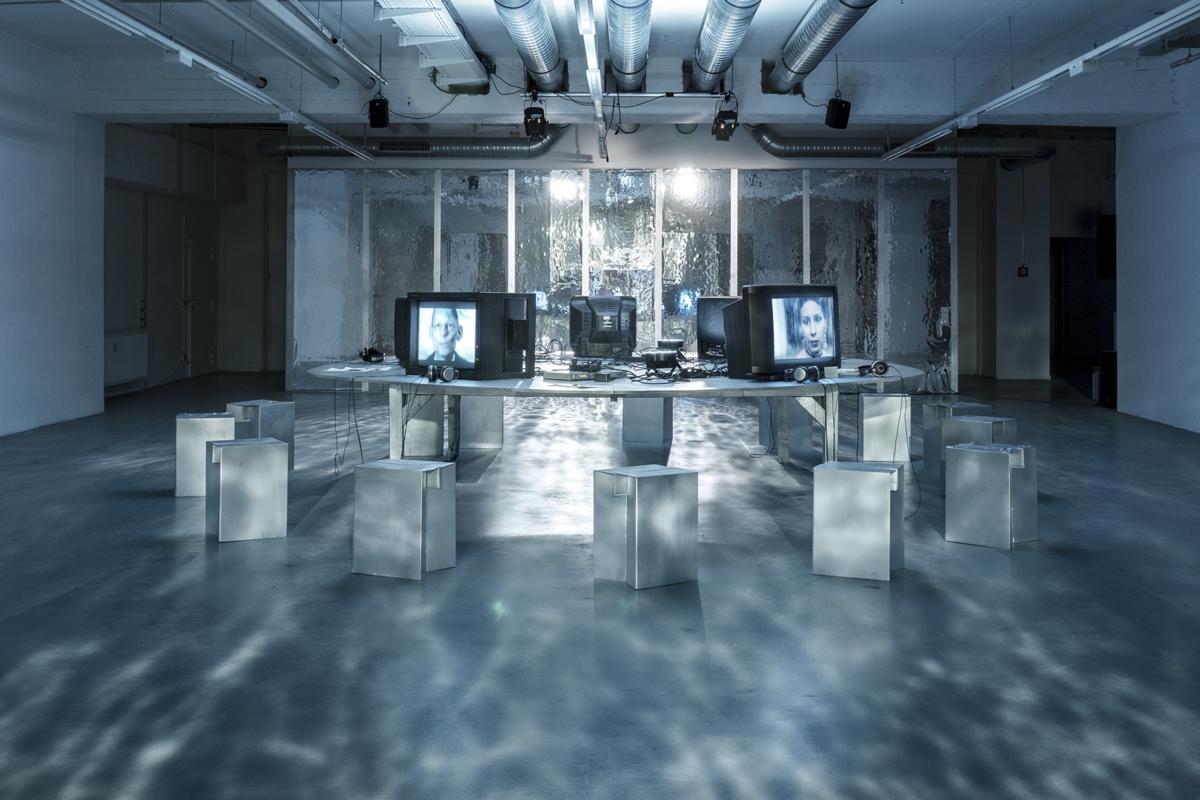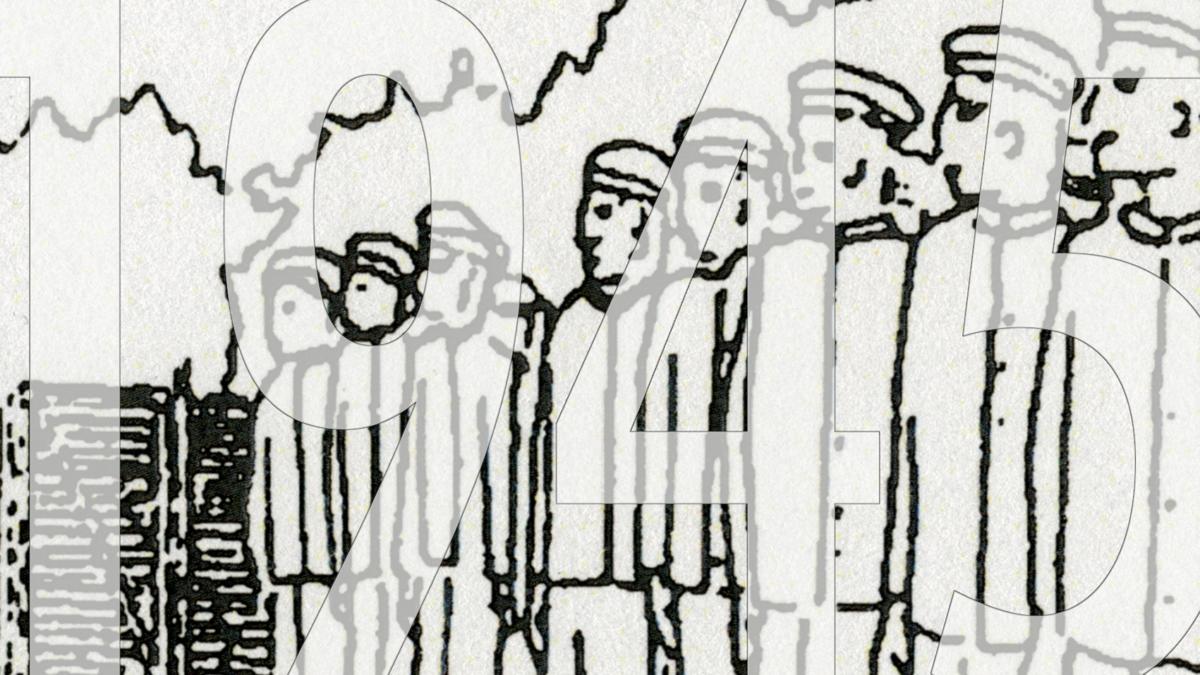
We only see what we look at. Looking is an act of choice.
John Berger, Ways of Seeing, 1972
A JPEG that recently did the rounds online contained a list of “American” names a Japanese games designer had thought up during the 1990s for use in a baseball computer game.[1] The names of the team members sounded North American, but upon closer inspection were not. In fact, what gave away Sleve McDichael, Karl Dandleton, and Raul Chamgerlain as fictive characters was a matter of just a few letters. The lexical deviations were based on a series of realistic and familiar cultural assumptions about North America: a hint of Scottish and Irish ancestry (Bobson Dugnutt), a helping of US President (Glenallen Mixon), interwoven with a North American cosmopolitanism that could have produced an Onson Sweemey or an Anatoli Smorin. It was precisely this almost correctness, this slight slip, that enabled the reality to be seen more clearly.
To approach one’s own social environment in a similar manner, as if it were foreign, is infinitely more difficult, impossible even. Franz Wanner takes a stab at it nonetheless. In his works, we can observe strategies of appropriation, imitation, and alienation which, consistently, if not exclusively, operate on a linguistic level. It is on this aspect that the following text will concentrate. For the two works under discussion here, the artist has focused closely on his immediate geographical and social surroundings, namely Munich and its environs. For Wanner, the place itself, be it Moscow and Bad Tölz or Duisburg and New York, is used merely as an example and thus fulfills no essential function, let alone an existential one. His observations over the past seven years have been directed toward the German armaments industry and its exports, the European Union’s policies on migration and asylum, and the relationship of German National Socialism to the ahistorical imperative of prosperity that succeeded it. Language, in the form of texts he has written himself, or which he quotes or alters, and the montage of existing pictorial material serve Wanner as a fundamental tool for his work and analyses.
Wanner rejects any description of his work as investigative. Although his process frequently yields little-known information, the artist is more a careful observer inquiring into things that we all know exist rather than one who unmasks or exposes them. A characteristic feature of his work method is a predilection for sources that are publicly accessible: websites of private and state institutions such as the local university and its research institutes, the German Ministry of Defense, or the aeronautical engineering company in the environs of Munich—as well as newspaper articles, town plans, and site visits. He neither needs nor wishes to make use of privileged information. Wanner is not seeking to unearth dark secrets from the depths of an archive and bring them to light, nor does he aim to set the records straight by means of meticulous documentary work. His greater concern is to question how many glaringly disturbing facts we collectively agree to disregard. In an interview, he described the socially widespread ability to catapult even the most obvious political contradictions out of our conscious awareness as “collective cognitive dissonance”[2] – a commonly shared symptom of capitalist societies (in this case, in Germany). The artist does not see collective national trauma as a necessary prerequisite for this suppression. Instead, he attributes it to a learned civic pragmatism in a state—the wunderkind of economic liberalism—that claimed to have shed all ideology when reinventing itself from the rubble of a self-induced war. With dry humor and a systematic combination of verifiable sources, fictitious stories, and quotes from movies, television, and online reportages, etc., Wanner presents his analysis of the pathology of overlooking what is in plain view within the present-day German moment.
The systematic continuation of this form of cognitive dissonance provides the subject for Wanner’s five-channel video installation Dual-Use (2016). The term “dual use” is used above all in export control. It refers to goods “with a dual purpose,” which can be used for both military and civilian ends.[3] The declared intention of classifying goods as dual-use is to make it harder to export those that could be used for military purposes. It is impossible to ignore the ambiguity of the term, or rather: this ambiguity is explicitly recorded in the designation itself, while the implicit control function of the regulation demands long explanations and even longer goods lists. It is this very ambiguity that makes the reference to dual use into a popular military gambit: under the guise of civilian use, civilian research (for example at a university) and funding can be tapped for military purposes. It was precisely this schizophrenic nature of the dual-use concept that aroused Wanner’s interest.
The installation Dual-Use consists of four monitors distributed throughout the room, framed by a projection of a vertically scrolling computer code. The four videos show interviews conducted and filmed by the artist himself, along with found interviews with a total of four conversation partners: Thomas Klapötke, Professor of Chemistry at Ludwig-Maximilian University in Munich (LMU), who is developing environmentally friendly explosives for the US Army; the former US drone pilot Danielle Balderston, today a gothic model; Armin Hilgarth, CEO of Sitec Aerospace in Bad Tölz; and Maren Bennewitz, Professor for Humanoid Robots at Bonn University. What runs through all interviews is the speakers’ positing of their (professional) activities as natural and hence divorced of responsibility. Various audible moments of irritation disrupt or interrupt the narrative of the speakers in each case: the CEO of Sitec Aerospace, who assures Wanner of the harmlessness of the technology being produced by his company, is visibly startled by a bang from the factory; Danielle Balderston, dressed in an evening gown as she tells of her lethal strikes as a pilot,[4] can hardly be heard through the driving rain. The aforementioned moments of irritation do not simply “happen,” but are the result of Wanner’s careful and subjective editing and sound work. The artist casually describes these interruptions as “interferences.” Roland Barthes first used the term “code” in the mid-1950s to describe the relationship between the production of power and language. In doing so, he was referring specifically to the French-colonial language or “writing”[5] at the time of the Algerian War. He likened the colonial vocabulary to a code, one that bore no relationship to reality, but rather represented its very opposite. In this language, the colonization of North Africa was toned down to a “French presence” there; the local inhabitants became “Muslim populations.” For Barthes, the intention of this language was to create conformity between (colonial French) norms and facts. In a “cosmetic” procedure, its purpose was to cover the truth of colonial oppression with “the rustle of language” (“bruit de langage”).


In Wanner’s installation, the interference, visualized in the form of the scrolling code, does not mask the facts described by the interviewees, but rather acts as an excess, which perforates their cosmetic discourses. This subtle alienation is underlined through various means. The observer is not afforded a distinct point of view despite the fact that the artist’s own ideological standpoint within the presented scenario is tangible. Maren Bennewitz, the scientist from Bonn, for example, is presented as a likeable figure and does not quite fit in with the other protagonists. Furthermore, the dramaturgy and picture and sound quality of the two conversations conducted and filmed by the artist himself differ from the two television productions to such an extent that we cannot help but ask ourselves how much staging and affect is contained in each of the conversations, especially in those which seem particularly “authentic.” Through more or less recognizable interventions in the form of editing, a particular social “idiom” becomes apparent both in Dual-Use and in the Battle Management Drawings (2017), which will be discussed next. In the sense of Susanne Leeb’s interpretation of Jacques Derrida’s idiomatic meaning in The Truth in Painting (1992), this social “idiom” itself is never shown but is crystallized at the historical, social, political, or economic “breaking point.” Derrida’s “trait” becomes visible only where a visual language is quoted in an appropriated or modified form.[6]
For the video Environmentally Friendly Explosives (2016), Wanner uses excerpts from various documentaries about the LMU chemist Thomas Klapötke produced by the 3sat and ARD TV networks. Unlike the original television productions, the video in Wanner’s version is permeated by billows of smoke and laced with scenes from the 1964 adaptation of Friedrich Dürrenmatt’s The Physicists. The effect achieved here verges on the comedic, with the result that “the bad conscience and the evil intent of apologetics”[7] become all the more unmistakable. Klapötke considers it an “honor” to work for “what is certainly the world’s largest army,” Moreover, he “naturally” has the right “to defend himself and to defend the country”—a telling absurdity, since the German scientist is talking here about the US Army.[8] We are reminded here of the colonial language as analyzed by Barthes, which served to cover up calculated economically motivated decisions in the disguise of a natural state of affairs. Thanks to this language, the French violence was presented as an objective necessity, as the result of a higher will that secured “a cynical reality with polite morality.”[9]
“I’d like to write a poetry that could speed up a dialectical continuity in discontinuity & thus make visible whatever is forced into invisibility by police realism […].”[10]
Battle Management Language (BML), to which Wanner’s Battle Management Drawings refer, has been developed for military use since 2001 and aims to rule out any ambiguity within communication. One does not have to be a linguist to be doubtful of claims of an unequivocal communication, which is why Wanner refers to the language that the Fraunhofer Institute in Wachtberg helped to develop as a “linguistic marvel.”[11] Conceptually, the BML is to some degree the straight-edge counterpart to the promiscuous concept of dual use. Wanner’s Battle Management Drawings consist of five vertically mounted flat screens, each of which shows two short texts and photographs sliding intermittently into view. Extremely condensed in terms of content and factual in tone, these texts, with their preponderance of nouns—they could also be described as analytical poems—seem to have been composed in this functional language; at least this is what Wanner seems to be implying. This conjecture is carried ad absurdum through their content in that the texts record a maximum of contradiction within a minimum of space. This impression is emphasized by the photographs, in which a drone is seen hovering above the Kalvarienberg (Calvary Hill) in Tölz with its picturesque baroque church. Wanner juxtaposes the short text about the development of technologies that claim to recognize people by the color of their skin and hair with a photo in which the massive radome of the Fraunhofer Institute rises up behind a neatly fenced-off, detached, single-family home. Within the texts, the contradictions clash with each other, sometimes within one and the same sentence: “secured homeland” and “hostile territory” (Battle Management Drawing II), “mass-cultural ‘commemoration event’” (Battle Management Drawing IV). Elsewhere, the horror arises from the contrast between the politically pragmatic linguistic form and the object, as in Battle Management Drawing I: “In a joint project between the Fraunhofer Institute and the University of Bonn, a mobile robot registers the color of people’s skin and hair in order to independently recognize and pursue individuals. According to a study by the Office of Technology Assessment at the German Bundestag (TAB), the arming of autonomous systems in Germany is inevitable. Machines prove capable of operating weapons on their own.”
Battle Management Language is intended, among other things, to issue commands to unmanned drones—a situation on which Battle Management Drawing II is based. Here (but not only here), Wanner weaves military jargon into the short text—“remote-control videos,” “flexible combat zone,” “enemy-centered”—thereby embracing a specific paranoid idiom that has good reason to strive to achieve the greatest possible abstraction of lived reality and its expression. This linguistic abstraction is no mere absurd result of Kafkaesque bureaucratic structures; it has a psychological objective, as Wanner specifically points out in Battle Management Drawing IV. Here, he takes as his subject the refusal of the German Armed Forces to recognize war trauma as such and to provide psychotherapeutic treatment: The aim of the Federal Ministry of Defense “is not vitality but fitness.” A person’s fitness, unlike his or her vitality, applies exclusively to his or her function, his or her suitability. Wanner uses this striking juxtaposition to direct our attention toward the core of a military-neoliberal “form of expression” that is widely used socially beyond this complex. According to Barthes, a mode of writing is—unlike the objects and “blind forces” of “language and style”— a “function”; it is “the literary language transformed by its social finality, form considered as human intention, and thus linked to the great crises of History.”[12] This ideologically anchored and anchoring language and its socio-economic function are a concrete form of expression by the Federal Republic, one that occasionally emerges in all its clarity through Wanner’s careful semantic intervention. We find ourselves reminded of the British poet Sean Bonney, who describes “the arid realities of the prison sentence and the police bullet” as the “real poetry of capital.”[13] No language, no formal style is more momentous, more far-reaching than that ordered and operated by the state and whose consequences are not aesthetic, but of a concrete, material, and social nature.
This text comes from Foes at the Edge of the Frame edited by Stephanie Weber, Curator of Contemporary Art at the Städtische Galerie im Lenbachhaus und Kunstbau München, Munich
[1] See https://twitter.com/lrgmnn/status/813635533658144768/photo/1 (accessed November 20, 2019).
[2] Franz Wanner in an interview with Philippine Régniez, “La frontière entre civil et militaire est brouillée,” in Usbek & Rica, Paris, July 3, 2018; https://usbeketrica.com/article/la-frontiere-entre-civil-et-militaire-est-brouillee (accessed November 20, 2019) [translated].
[3] According to EU regulations, these goods include those which “can be used both for nonexplosive purposes and also for any form of support in the manufacture of nuclear weapons or other explosive nuclear devices” (Art. 2, para. 1, EC Dual-Use Regulation).
[4] One of the television documentaries from which Wanner used pictures for his video was indeed called Der Todesengel (The Angel of Death) (NDR).
[5] In the sense of Barthes’s term “écriture.”
[6] Susanne Leeb, “Die kleinen ‘k’s der Kunst,” in Texte zur Kunst, no. 108 (2017), pp. 32–56, here p. 33.
[7] Karl Marx, Das Kapital, vol. 1, preface to the second edition, Hamburg 2009, pp. 39–46, here p. 41. In his short essay on the history of the political economy, Writing about the moment when the French and German bourgeoisies gained power, Marx says that it marked the end of the scientific bourgeois economy. The full quotation perfectly suits the situation of the scientist at Ludwig-Maximilian University, Munich: “Es handelte sich jetzt nicht mehr darum, ob dies oder jenes Theorem wahr sei, sondern ob es dem Kapital nützlich oder schädlich, bequem oder unbequem, ob polizeiwidrig oder nicht. An die Stelle uneigennütziger Forschung trat bezahlte Klopffechterei, an die Stelle unbefangener wissenschaftlicher Untersuchung das böse Gewissen und die schlechte Absicht der Apologetik.” [“It was thenceforth no longer a question, whether this theorem or that was true, but whether it was useful to capital or harmful, expedient or inexpedient, politically dangerous or not. In place of disinterested enquirers, there were hired prize-fighters; in place of genuine scientific research, the bad conscience and the evil intent of apologetic.”] English translation available online at: https://www.econlib.org/book-chapters/chapter-authors-prefaces-to-the-first-and-second-editions-by-karl-marx/ (accessed November 25, 2019).
[8] Unless we insinuate that Klapötke is thinking along the lines of conflict between “Occident” and “Orient,” which have been exaggerated since 2001.
[9] Roland Barthes, “Afrikanische Grammatik,” in Barthes, Mythen des Alltags, translated from the French by Horst Brühmann, Berlin 2010, pp. 178–86, here p. 178 [translated]. English edition: “African Grammar,” in Mythologies, transl. Richard Howard and Annette Lavers, New York 2012.
[10] Sean Bonney, “Letter on Poetics (after Rimbaud),” 2011, http://abandonedbuildings.blogspot.com/2011/06/letter-on-poetics.html (accessed November 20, 2019).
[11] Franz Wanner, “Battle Management Language – Sprachlose Mythen militärischer Strukturen,” lecture at the Haus der Wissenschaft Bremen, March 16, 2019, advance printing in Informationsstelle Militarisierung e.V. (ed.), Krieg im Informationsraum. Zum 21. Kongress der Informationsstelle Militarisierung, Tübingen 2018; http://www.imi-online.de/download/Informationsraum2018-Web.pdf, pp. 32–39 (accessed November 20, 2019).
[12] Roland Barthes, Am Nullpunkt der Literatur; English edition: Writing Degree Zero, transl. Annette Lavers and Colin Smith with a preface by Sunsan Sontag, 5th edn, New York 1989, p. 14. Available online at https://archive.org/details/writingdegreezer00rola_0/page/14 (accessed November 20, 2019).
[13] Sean Bonney, “Notes on Militant Poetics” 1/3, http://abandonedbuildings.blogspot.com/2012/03/notes-on-militant-poetics-1-3.html (accessed November 20, 2019).
Imprint
| Author | Stephanie Weber (editor) |
| Title | Foes at the Edge of the Frame |
| Publisher | DISTANZ |
| Published | 2020 |
| Index | Franz Wanner Stephanie Weber |




